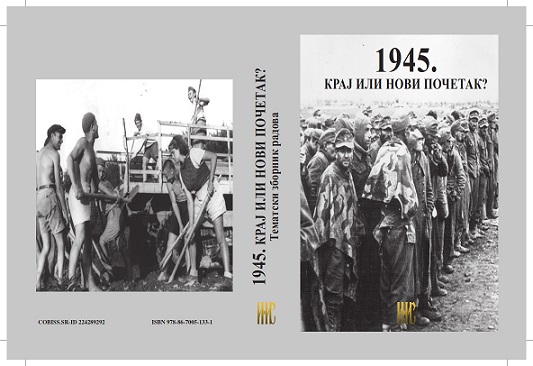Утврђивање граница Федералне Србије 1945. године
The Delimitation of the Borders of the Federal Serbia in 1945
Author(s): Dragan Aleksić, Goran P. Ilić
Subject(s): Governance, Political history, Government/Political systems, WW II and following years (1940 - 1949), History of Communism
Published by: Institut za noviju istoriju Srbije
Keywords: boundaries; demarcation; federation; commission; Communist Party;
Summary/Abstract: The inner make-up of the Yugoslav state was changed after WWII by the decision of the Communist Party of Yugoslavia that had come to power in the country. In keeping with the decisions of the second session of the interim partisan parliament (the AVNOJ) federal order was established with six constituent republics. However, the new authorities adopted no criteria how the borders between the republics in the new federation were to be drawn. Thus the solution of this important matter remained in the hands of the Party leadership that had to implement it on the Soviet model. Delimitation between federal republics was made with no legal procedure, without passing any law whatsoever and without participation of leaderships of republics concerned. In the course of drawing borders neither ethnic not historical principles were applied. By setting up Bosnia-Herzegovina as a multi-ethnic republic, the ethnic principle was given up, whereas historical principle was not applied consequently in the case of Serbia because this federal unit was divested of some of the territories belonging to her as she entered Yugoslavia and that had become hers after the wars of liberation 1912-1913. Thus considerable part of the Serbs remained outside their ethnic republic. In keeping with the new slogan of “brotherhood and unity” and using the flamboyant rhetoric in vulgar propaganda it had launched in public, the ruling party downplayed the importance of the borders between republics. It was pointed out that in the new federation of equal peoples the borders would be of secondary importance and that they would rather connect than divide peoples. The leadership of Serbia, dissatisfied with the way the borders had been drawn tried to intercede with the aim of rectifying them, pointing out at the damage done to the Serbian people. This objection, as well as objections of part of the legal opposition comprising the pre-war political parties, failed to influence significantly the already adopted solutions.
Book: 1945. Kpaj или нови почетак?
- Page Range: 477-495
- Page Count: 19
- Publication Year: 2016
- Language: Serbian
- Content File-PDF

